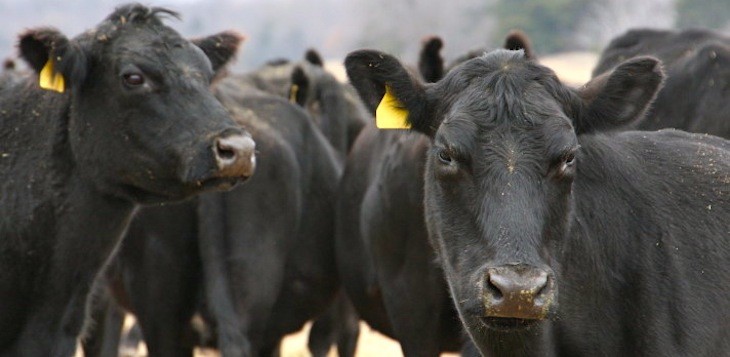Beef industry to finish strong in 2019
by December 17, 2019 2:32 pm 321 views

The beef industry is poised to have a solid finish in 2019 as sharply higher carcass weights continue to boost beef production since October, according to Derrell Peel, extension livestock marketing specialist for Oklahoma State University.
Peel said after spending much of the year below year-ago levels on a weekly basis, carcass weights moved sharply higher in October and November and higher year-over-year compared to the same period last year.
He said steer carcass weights likely peaked in mid-November at 912 pounds, though weights have dropped only one pound from that level in the most recent two weeks of data. In 2018, steer carcass weights peaked one week earlier at 904 pounds.
Peel said steer carcass weights have averaged 7.5 pounds higher year-over-year for the past eight weeks of data. Year-to-date, steer carcass weights are still down year-over-year, but are now down just 2.7 pounds compared to last year.
Heifer carcass weights likely peaked at 742 pounds in the third week of November and have dropped two pounds since then. One year ago, heifer carcass weights peaked the last week of November at 838 pounds. Heifer carcass weights have been higher year-over-year for the past seven weeks, but have averaged 4.0 pounds below year-ago levels for the year to date.
“Sharply higher carcass weights recently reflect better feedlot conditions and performance in the last quarter of 2019 after lots of struggles earlier in the year,” Peel said. “Data from the KSU Focus on Feedlots shows average daily gains in feedlot were down through the first three-quarters of the year with simultaneously poor feeding efficiency resulting in higher feed to gain ratios over the same period. The result was lower carcass weights despite the fact that days on feed were higher year over year for the bulk the year until recently.”
Peel said steer and heifer slaughter is projected to be up about 0.8% year-over-year compared to 2018 with total cattle slaughter up about 1.2% at 33.4 million head. Combined with modestly lower carcass weights, total beef production for 2019 is projected to be up 0.6% year-over-year at 27.0 billion pounds, just a few pounds shy of record U.S. beef production in 2002.
He said feedlots were challenged earlier in the year which reduced the Choice grading percentage of products coming through the pipeline between the second and fourth quarters. He said the result has created an unusually wide Choice-Select spread in the second half of the year that has only recently narrowed back to more typical levels for this time of year.
Since June, the weekly Choice-Select spread has averaged $22.84 per hundredweight., compared to $12.09/per hundredweight for the same period last year. The most recent weekly Choice-Select spread was $14.67/per hundredweight, according to the U.S. Department of Agriculture.
Peel said wholesale boxed beef prices peaked in mid-November with a weekly value of $240.66/ per hundredweight for Choice and $215.52 for Select. The mid-December level of $219.14 per hundredweight for Choice and $204.47 per hundredweight for Select is slightly higher than the same period a year ago.
